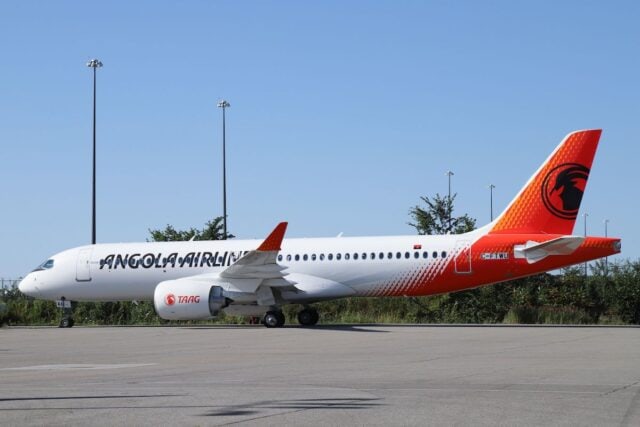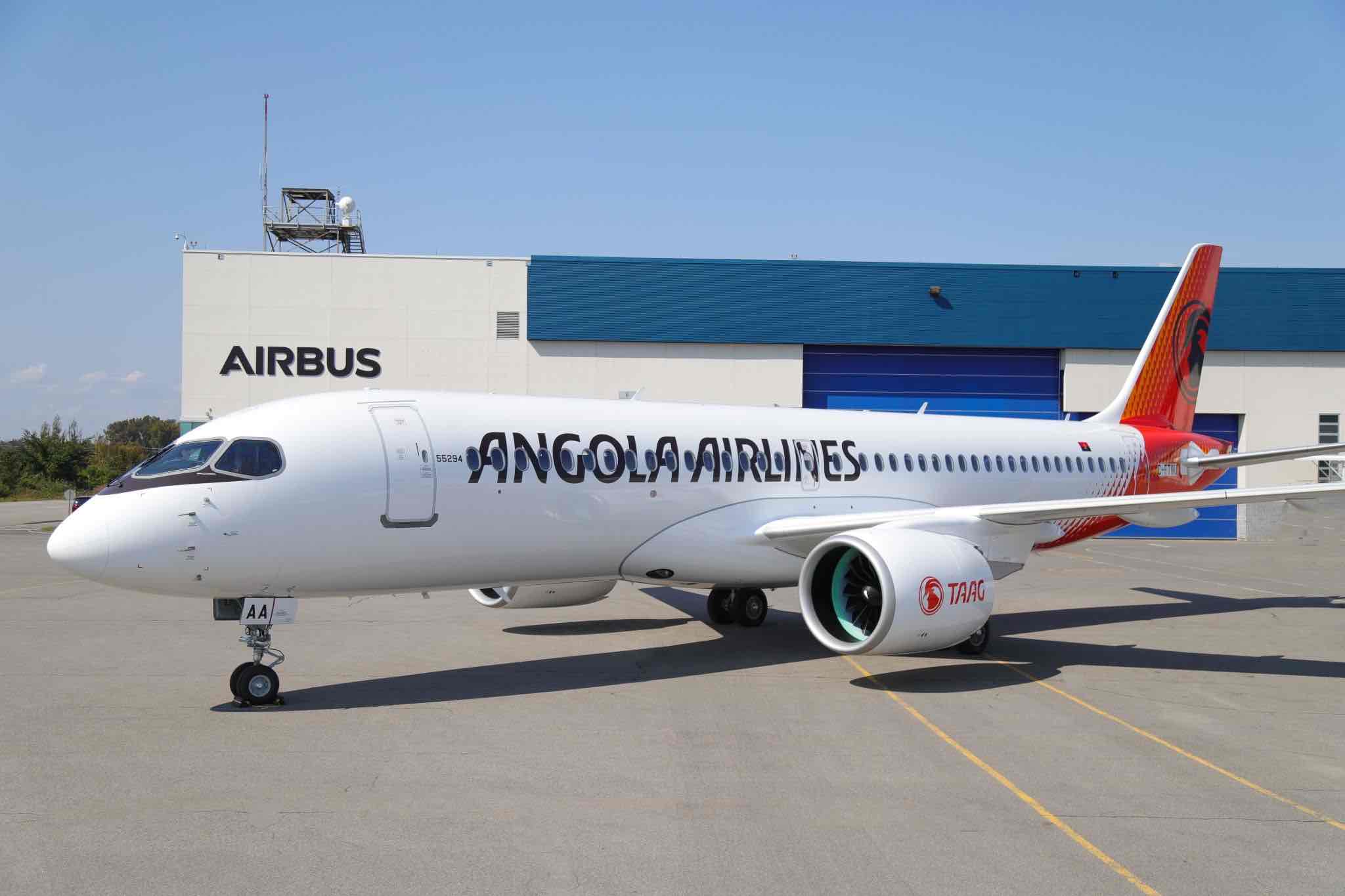TAAG Angola Airlines Expands Fleet with First A220-300
TAAG's Airbus A220 offers 137 seats: 12 business, 125 economy.

Johannesburg, 20 September 2024 – TAAG Angola Airlines (DT), has taken delivery of its first A220-300, Reg “D2-TAA” from the Airbus Mirabel site, in Canada.
TAAG’s acquisition of the A220 on lease from Air Lease Corporation (ALC), is a further step in its modernisation and growth path, which includes a more versatile fleet.
The aircraft livery features the PALANCA (black antelope considered a national symbol) on the plane’s tail and winglets, as well the colour pattern inspired by Angola’s traditional fabric named «Samakaka».
A220 Capacity and Specifications
TAAG has configured its A220 aircraft with a total passenger capacity of 137 (12 in business class and 125 in economy class).
The A220 features the widest economy class seats among single-aisle aircraft, along with large windows and the highest ceilings in its class.
These features contribute to an enhanced passenger experience for TAAG customers on local and regional routes. ✈︎

Purpose-built for the 100-150 seat market, the A220 offers TAAG a fuel-efficient solution for its planned network expansion.
The aircraft’s maximum range of 3,600 nautical miles (6,700 kilometres) enables non-stop flights, facilitating TAAG’s growth strategy.
Airbus Flight Hour Services
TAAG Angola has also committed to Airbus Flight Hour Services for material management solutions and Skywise Health Monitoring.
These services enable a smooth entry into services thanks to a dedicated pool of parts, component engineering and repair services worldwide.
A220 and Sustainable Operations
Airbus noted that the A220, a new-generation aircraft, is also part of the solution to help TAAG reach its sustainability ambitions.
It introduces greater efficiency with 25% lower fuel burn and CO2 emissions per seat compared to previous-generation aircraft and around 40% lower NOx (Nitrogen Oxides) emissions than industry standards.
As with all Airbus aircraft, the A220 is already able to operate with up to 50% Sustainable Aviation Fuel (SAF). The company aims for all its aircraft to be capable of operating with up to 100% SAF by 2030.